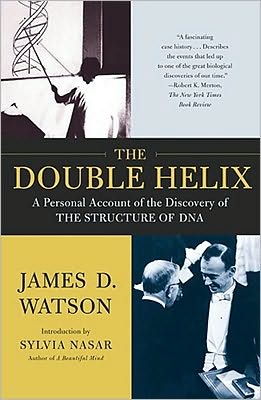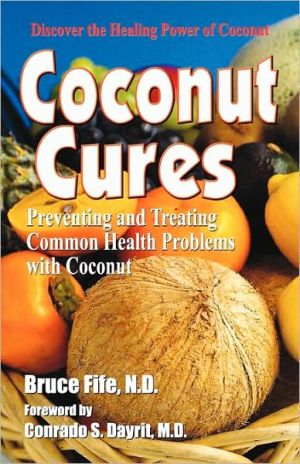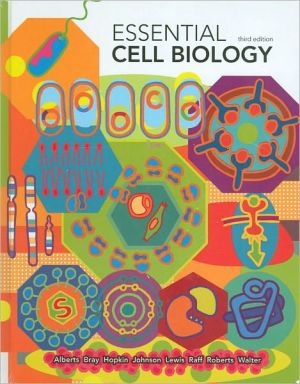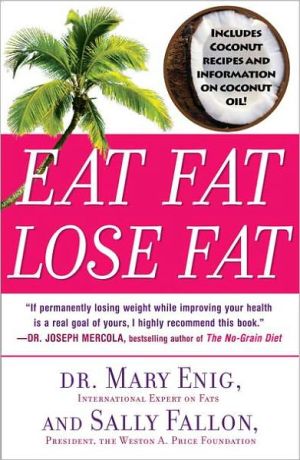Lehninger Principles of Biochemistry
Search in google:
In the Fifth Edition, authors Dave Nelson and Mike Cox combine the best of the laboratory and best of the classroom, introducing exciting new developments while communicating basic principles through a variety of new learning tools—from new in-text worked examples and data analysis problems to the breakthrough eBook, which seamlessly integrates the complete text and its media components. Doody Review Services Reviewer:Eugene A Davidson, PhD(Georgetown University School of Medicine)Description:This comprehensive biochemical text covers all aspects of modern biochemistry, together with many new developments since the previous edition of four years ago.Purpose:The goal is to provide students with a thorough biochemistry text. Given the overall importance of modern biochemistry (broadly writ), this is a worthwhile objective. In general, the goals are met.Audience:The target audience includes senior undergraduate, graduate, and medical students. The authors are both knowledgeable and experienced.Features:There are several comprehensive biochemistry texts available. The fourth edition of Lehninger draws on a successful history initiated with the first edition which was a landmark text in its time. The 28 chapters follow an expected and logical progression from discussion of the fundamental molecules involved in cellular events through metabolism to the latest aspects of molecular biology. Illustrations are well done and frequent. Each chapter is accompanied by a short but useful bibliography and a set of problems. Problem answers are at the end, together with a detailed glossary and a thorough index. In an attempt to capture as broad a student audience as possible, discussions of both photosynthesis and metabolic diseases are offered. Thus, the material can be used in undergraduate/graduate courses as well as in medical school. As with other representatives of this text style, the typical student is likely to have some difficulty assigning relative importance to a given item considering the overall depth of coverage of topics. Nevertheless, careful reading with some guidance will be rewarding for most scholars and the book will serve as companion text for the usual biochemistry course. The bibliography is not as complete as some, but will provide pointers to additional material. A useful, albeit formidable (for the student) contribution.Assessment:This is yet another mega-text, seeking to satisfy all audiences. Not easy for the average student to read, but all of the material is there. Competitors include Voet and Voet, Biochemistry, 3rd edition (John Wiley & Sons, 2004); Devlin, Textbook of Biochemistry with Clinical Correlations, 6th edition (John Wiley & Sons, 2006) (medical focus); and Metzler, The Chemical Reactions of Living Cells, 2nd edition (Elsevier, 2003) (somewhat more comprehensive with an extraordinary bibliography). Is the new edition needed?? Probably, but most students will still be able to use the earlier version. Conversely, other publishers put out new editions, so this one has to.
1 The Foundations of Biochemistry 1.1 Cellular Foundations 1.2 Chemical Foundations1.3 Physical Foundations1.4 Genetic Foundations1.5 Evolutionary Foundations Box 1–1 Molecular Weight, Molecular Mass, and Their Correct Units Box 1–2 Louis Pasteur and Optical Activity: In Vino, Veritas Box 1–3 Entropy: The Advantages of Being Disorganized• Now introduces the concepts of proteomes and proteomics • Updated section on how a new species evolves• Increased emphasis on the interdependence of life forms in global cycles of energy I STRUCTURE AND CATALYSIS 2 Water 2.1 Weak Interactions in Aqueous Systems 2.2 Ionization of Water, Weak Acids, and Weak Bases2.3 Buffering against pH Changes in Biological Systems2.4 Water as a Reactant2.5 The Fitness of the Aqueous Environment for Living Organisms Box 2–1 Medicine: On Being One’s Own Rabbit (Don’t Try This at Home!)• Expanded discussion of blood pH buffering by the bicarbonate system,including a new box describing Haldane’s use of himself as a guinea pig in experiments aimed at changing the acidity of blood • New section on ketoacidosis in diabetes 3 Amino Acids, Peptides, and Proteins3.1 Amino Acids3.2 Peptides and Proteins3.3 Working with Proteins3.4 The Structure of Proteins: Primary Structure Box 3–1 Methods: Absorption of Light by Molecules: The Lambert-Beer Law Box 3–2 Methods: Investigating Proteins with Mass Spectrometry Box 3–3 Medicine: Consensus Sequences and Sequence Logos• Significant revision to bioinformatics• More thorough explanation of consensus sequences, including an illustration of common ways to depict consensus sequences 4 The Three-Dimensional Structure of Proteins4.1 Overview of Protein Structure4.2 Protein Secondary Structure4.3 Protein Tertiary and Quaternary Structures4.4 Protein Denaturation and Folding Box 4–1 Methods: Knowing the Right Hand from the Left Box 4–2 Permanent Waving Is Biochemical Engineering Box 4–3 Medicine: Why Sailors, Explorers, and College Students Should Eat Their Fresh Fruits and Vegetables Box 4–4 The Protein Data Bank Box 4–5 Methods: Methods for Determining the Three-Dimensional Structure of a Protein Box 4–6 Medicine: Death by Misfolding: The Prion Diseases• New section, Defects in protein folding may be the molecular basis for a wide range of human genetic disorders, discusses a variety of amyloid diseases• New section on circular dichroism 5 Protein Function5.1 Reversible Binding of a Protein to a Ligand: Oxygen-Binding Proteins5.2 Complementary Interactions between Proteins and Ligands: The Immune System and Immunoglobulins5.3 Protein Interactions Modulated by Chemical Energy: Actin, Myosin, and Molecular Motors Box 5–1 Medicine: Carbon Monoxide: A Stealthy Killer6 Enzymes6.1 An Introduction to Enzymes6.2 How Enzymes Work6.3 Enzyme Kinetics as an Approach to Understanding Mechanism6.4 Examples of Enzymatic Reactions6.5 Regulatory Enzymes Box 6–1 Transformations of the Michaelis-Menten Equation: The Double-Reciprocal Plot Box 6–2 Kinetic Tests for Determining Inhibition Mechanisms Box 6–3 Evidence for Enzyme–Transition State Complementarity • More explanatory text added to the mechanisms for the enolase and lysozyme reactions• New section on pharmaceuticals developed from an understanding of enzyme mechanism, using penicillin and HIV protease inhibitors as examples 7 Carbohydrates and Glycobiology7.1 Monosaccharides and Disaccharides7.2 Polysaccharides7.3 Glycoconjugates: Proteoglycans, Glycoproteins, and Glycolipids7.4 Carbohydrates as Informational Molecules: The Sugar Code7.5 Working with Carbohydrates Box 7–1 Medicine: Blood Glucose Measurements in the Diagnosis and Treatment of Diabetes• New medical box, introduces hemoglobin glycation and AGEs and their role in the pathology of advanced diabetes• New section on sugar analogs as drugs that target viral neuraminidase• Introduction to the new field of glycomics, including methods for determining oligosaccharide structure using MALDI-MS 8 Nucleotides and Nucleic Acids8.1 Some Basics8.2 Nucleic Acid Structure8.3 Nucleic Acid Chemistry8.4 Other Functions of Nucleotides 9 DNA-Based Information Technologies9.1 DNA Cloning: The Basics9.2 From Genes to Genomes9.3 From Genomes to Proteomes9.4 Genome Alterations and New Products of Biotechnology Box 9–1 Medicine: A Potent Weapon in Forensic Medicine Box 9–2 Medicine: The Human Genome and Human Gene Therapy• New material on the green fluorescent protein• Thorough updating of genomics section 10 Lipids10.1 Storage Lipids10.2 Structural Lipids in Membranes10.3 Lipids as Signals, Cofactors, and Pigments10.4 Working with Lipids Box 10–1 Sperm Whales: Fatheads of the Deep Box 10–2 Medicine: Abnormal Accumulations of Membrane Lipids: Some Inherited Human Diseases• New medical section on the role of polyunsaturated fatty acids and trans fatty acids in cardiovascular disease • New section on lipidomics• New descriptions of volatile lipids used as signals by plants, and pigments of bird feathers derived from colored lipids in plant foods11 Biological Membranes and Transport11.1 The Composition and Architecture of Membranes11.2 Membrane Dynamics11.3 Solute Transport across Membranes Box 11–1 Methods: Atomic Force Microscopy to Visualize Membrane Proteins Box 11–2 Medicine: Defective Glucose and Water Transport in Two Forms of Diabetes Box 11–3 Medicine: A Defective Ion Channel in Cystic Fibrosis• Expanded section on bilayer dynamics covers flippases, floppases, scramblases, and bilayer asymmetry • Expanded and updated section on lipid rafts and caveolae includes new material on membrane curvature and the proteins that influence it, and introduces amphitropic proteins and annular lipids • New information on the structural basis for voltage gating in a K+ channel 12 Biosignaling12.1 General Features of Signal Transduction12.2 G Protein–Coupled Receptors and Second Messengers12.3 Receptor Tyrosine Kinases12.4 Receptor Guanylyl Cyclases, cGMP, and Protein Kinase G12.5 Multivalent Scaffold Proteins and Membrane Rafts12.6 Gated Ion Channels12.7 Integrins: Bidirectional Cell Adhesion Receptors12.8 Regulation of Transcription by Steroid Hormones12.9 Signaling in Microorganisms and Plants12.10 Sensory Transduction in Vision, Olfaction, and Gustation12.11 Regulation of the Cell Cycle by Protein Kinases12.12 Oncogenes, Tumor Suppressor Genes, and Programmed Cell Death Box 12–1 Methods: Scatchard Analysis Quantifies the Receptor-Ligand Interaction Box 12–2 Medicine: G Proteins: Binary Switches in Health and Disease Box 12–3 Methods: FRET: Biochemistry Visualized in a Living Cell Box 12–4 Medicine: Color Blindness: John Dalton’s Experiment from the Grave Box 12–5 Medicine: Development of Protein Kinase Inhibitors for Cancer Treatment• New Medical section on G protein coupled receptors (GCPRs) discusses the range of diseases for which drugs target GPCRs• New box on G proteins, proteins that regulate their GTPase activity, and the medical consequences of defective G protein function• Expanded and integrated treatment of local signaling circuits, including AKAPs and signaling complexes that include protein kinase A, adenylyl cyclase, and phosphodiesterase, and localized puffs and waves of Ca2+ • New medical box on the use of protein kinase inhibitors in cancertherapy II BIOENERGETICS AND METABOLISM13 Bioenergetics and Biochemical Reaction Types13.1 Bioenergetics and Thermodynamics13.2 Chemical Logic and Common Biochemical Reactions13.3 Phosphoryl Group Transfers and ATP13.4 Biological Oxidation-Reduction Reactions Box 13–1 Firefly Flashes: Glowing Reports of ATP• New section, Chemical logic and common biochemical reactions, discusses common biochemical reaction types 14 Glycolysis, Gluconeogenesis, and the Pentose Phosphate Pathway14.1 Glycolysis14.2 Feeder Pathways for Glycolysis14.3 Fates of Pyruvate under Anaerobic Conditions: Fermentation14.4 Gluconeogenesis14.5 Pentose Phosphate Pathway of Glucose Oxidation Box 14–1 Medicine: High Rate of Glycolysis in Tumors Suggests Targets for Chemotherapy and Facilitates Diagnosis Box 14–2 Athletes, Alligators, and Coelacanths: Glycolysis at Limiting Concentrations of Oxygen Box 14–3 Ethanol Fermentations: Brewing Beer and Producing Biofuels Box 14–4 Medicine: Why Pythagoras Wouldn’t Eat Falafel: Glucose 6-Phosphate Dehydrogenase Deficiency• New medical box on glucose uptake deficiency in type 1 diabetes• New medical box on how the high rate of glycolysis in cancerous tissue aids cancer diagnosis and treatment 15 Principles of Metabolic Regulation15.1 Regulation of Metabolic Pathways15.2 Analysis of Metabolic Control15.3 Coordinated Regulation of Glycolysis and Gluconeogenesis15.4 The Metabolism of Glycogen in Animals15.5 Coordinated Regulation of Glycogen Synthesis and Breakdown Box 15–1 Methods: Metabolic Control Analysis: Quantitative Aspects Box 15–2 Isozymes: Different Proteins That Catalyze the Same Reaction Box 15–3 Medicine: Genetic Mutations That Lead to Rare Forms of Diabetes Box 15–4 Carl and Gerty Cori: Pioneers in Glycogen Metabolism and Disease• New section on emerging role of ribulose 5-phosphate as central regulator of glycolysis and gluconeogenesis• Expanded discussion of phosphoprotein phosphatases in metabolic regulation• Expanded coverage of the role of transcriptional regulators in metabolic regulation • New medical box on mutations that lead to rare forms of diabetes regulation (MODY) 16 The Citric Acid Cycle16.1 Production of Acetyl-CoA (Activated Acetate) 16.2 Reactions of the Citric Acid Cycle 16.3 Regulation of the Citric Acid Cycle 16.4 The Glyoxylate Cycle Box 16–1 Moonlighting Enzymes: Proteins with More Than One Job Box 16–2 Synthases and Synthetases; Ligases and Lyases; Kinases,Phosphatases, and Phosphorylases: Yes, the Names Are Confusing! Box 16–3 Citrate: A Symmetric Molecule That Reacts Asymmetrically Box 16–4 Citrate Synthase, Soda Pop, and the World Food Supply • New box on effect of diabetes on the citric acid cycle and ketone body formation• Expanded discussion of substrate channeling• New section on mutations in citric acid cycle that lead to cancer• New box on moonlighting enzymes 17 Fatty Acid Catabolism 17.1 Digestion, Mobilization, and Transport of Fats 17.2 Oxidation of Fatty Acids 17.3 Ketone Bodies Box 17–1 Fat Bears Carry Out b Oxidation in Their Sleep Box 17–2 Coenzyme B12: A Radical Solution to a Perplexing Problem • New section on the role of transcription factors (PPARs) in regulation of lipid catabolism 18 Amino Acid Oxidation and the Production of Urea18.1 Metabolic Fates of Amino Groups18.2 Nitrogen Excretion and the Urea Cycle18.3 Pathways of Amino Acid Degradation Box 18–1 Medicine: Assays for Tissue Damage Box 18–2 Medicine: Scientific Sleuths Solve a Murder Mystery• New section on pernicious anemia and associated problems in strict vegetarians.19 Oxidative Phosphorylation and Photophosphorylation Oxidative Phosphorylation19.1 Electron-Transfer Reactions in Mitochondria19.2 ATP Synthesis19.3 Regulation of Oxidative Phosphorylation19.4 Mitochondria in Thermogenesis, Steroid Synthesis, and Apoptosis19.5 Mitochondrial Genes: Their Origin and the Effects of MutationsPhotosynthesis: Harvesting Light Energy19.6 General Features of Photophosphorylation 19.7 Light Absorption19.8 The Central Photochemical Event: Light-Driven Electron Flow19.9 ATP Synthesis by Photophosphorylation19.10 The Evolution of Oxygenic Photosynthesis Box 19–1 Hot, Stinking Plants and Alternative Respiratory Pathways• Updated discussion of the structure of the electron transfer complexes of mitochondria and chloroplasts, and of the Fo complex• Updated description of the water-splitting complex’s structure in chloroplasts• Expanded description of mitochondrial diseases and mitochondrial role in diabetes 20 Carbohydrate Biosynthesis in Plants and Bacteria 20.1 Photosynthetic Carbohydrate Synthesis 20.2 Photorespiration and the C4 and CAM Pathways 20.3 Biosynthesis of Starch and Sucrose 20.4 Synthesis of Cell Wall Polysaccharides: Plant Cellulose and Bacterial Peptidoglycan 20.5 Integration of Carbohydrate Metabolism in the Plant Cell 21 Lipid Biosynthesis21.1 Biosynthesis of Fatty Acids and Eicosanoids21.2 Biosynthesis of Triacylglycerols21.3 Biosynthesis of Membrane Phospholipids21.4 Biosynthesis of Cholesterol, Steroids, and Isoprenoids Box 21–1 Mixed-Function Oxidases, Oxygenases, and Cytochrome P-450• Revised and updated section on fatty acid synthase includes new structural information on FAS I • Updated information on cyclooxygenase inhibitors (pain relievers Vioxx, Celebrex, Bextra)• New information on HMG-CoA reductase and new medical box on statins 22 Biosynthesis of Amino Acids, Nucleotides, and Related Molecules22.1 Overview of Nitrogen Metabolism22.2 Biosynthesis of Amino Acids22.3 Molecules Derived from Amino Acids22.4 Biosynthesis and Degradation of Nucleotides Box 22–1 Unusual lifestyles of the obscure but abundant Box 22–2 Medicine: On Kings and Vampires Box 22–3 Medicine: Curing African Sleeping Sickness with a Biochemical Trojan Horse• Updated coverage of nitrogen cycle section includes a new box on anammox bacteria• New information on therapy for acute lymphoblastic leukemia• New information on folic acid deficiency 23 Hormonal Regulation and Integration of Mammalian Metabolism23.1 Hormones: Diverse Structures for Diverse Functions23.2 Tissue-Specific Metabolism: The Division of Labor23.3 Hormonal Regulation of Fuel Metabolism23.4 Obesity and the Regulation of Body Mass23.5 Obesity, the Metabolic Syndrome, and Type 2 Diabetes Box 23–1 Medicine: How Is a Hormone Discovered? The Arduous Path to Purified Insulin• Expanded coverage and updating of the biochemical connections between obesity, metabolic syndrome, and type 2 diabetes• Updated discussion of the integration of fuel metabolism in fed and starved states in diabetes III INFORMATION PATHWAYS24 Genes and Chromosomes24.1 Chromosomal Elements24.2 DNA Supercoiling24.3 The Structure of Chromosomes Box 24–1 Medicine: Curing Disease by Inhibiting Topoisomerases Box 24–2 Medicine: Epigenetics, Nucleosome Structure, and Histone Variants• New material on histone modification, histone variants, and nucleosome deposition• New medical box on the use of topoisomerase inhibitors in the treatment of bacterial infections and cancer, includes material on ciprofloxacin (the antibiotic effective for anthrax) • New box on the role of histone modification and nucleosome deposition in the transmission of epigenetic information in heredity 25 DNA Metabolism25.1 DNA Replication25.2 DNA Repair25.3 DNA Recombination Box 25–1 Medicine: DNA Repair and Cancer• New information on the initiation of replication and the dynamics at the replication fork, introducing AAA+ ATPases and their functions in replication and other aspects of DNA metabolism 26 RNA Metabolism26.1 DNA-Dependent Synthesis of RNA26.2 RNA Processing26.3 RNA-Dependent Synthesis of RNA and DNA Box 26–1 Methods: RNA Polymerase Leaves Its Footprint on a Promoter Box 26–2 Fighting AIDS with Inhibitors of HIV Reverse Transcriptase Box 26–3 Methods: The SELEX Method for Generating RNA Polymers with New Functions Box 26–4 An Expanding RNA Universe Filled with TUF RNAs• New section on the expanding roles of RNA in cells 27 Protein Metabolism27.1 The Genetic Code27.2 Protein Synthesis27.3 Protein Targeting and Degradation Box 27–1 Exceptions That Prove the Rule: Natural Variations in the Genetic Code Box 27–2 From an RNA World to a Protein World Box 27–3 Natural and Unnatural Expansion of the Genetic Code Box 27–4 Induced Variation in the Genetic Code: Nonsense Suppression• Expanded section on protein synthesis coupled to the advances in ribosome structure• New information on the roles of RNA in protein biosynthesis 28 Regulation of Gene Expression28.1 Principles of Gene Regulation28.2 Regulation of Gene Expression in Bacteria28.3 Regulation of Gene Expression in Eukaryotes Box 28–1 Of Fins, Wings, Beaks, and Things• New information about roles of RNA in gene regulation• New box on the connections between evolution and development Appendix A Common Abbreviations in the Biochemical Research Literature Appendix B Abbreviated Solutions to Problems Glossary Credits Index








